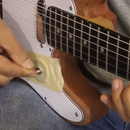Introduction: Iso-Path Board Game
Iso-Path, is an interesting game conceived of by a YouTuber that goes by Pocket83. He built his game using a tablesaw, but I decided to duplicated it with a CNC router as that's more my style. Video of this CNC build can be found here, or at the end of this writeup.
Step 1: Cut Out Board and Pieces
Cut out the board and pieces on a CNC router, laser cutter, or whatever tool is at your disposal per the provided DXF file. 1/4 inch plywood is used here.
Note that you may want to engrave the board's small hexagons with a smaller bit than you use to actually cut out the material.
The 6 side pieces will need to be taller than the small hexagons in order to keep the second layer in place (approx. 5/16" to 3/8" thickness)
Attachments
Step 2: Deburr/Finish
Sand and file as necessary to get the pieces as you would like them to be.
Step 3: Test Fit - a Note on Notches
Test to make sure all your pieces fit together correctly.
Note that as seen in the third image I didn't properly undercut the side pieces, so things didn't fit well. Don't forget to cut into the sharp corners a bit as needed.
Step 4: Coat1 - Urethane
Apply some urethane to the board. Depending on how much sanding you want to do in the next step, this may not be necessary.
Step 5: Coat2 - Line Markings
Use a paint pen to fill in the lines that you've engraved with a CNC router. Sand and wipe down as needed to clean up lines.
Step 6: Coat3 - More Urethane
Apply another coat to seal in the paint.
Step 7: Stain and Urethane Pieces, Paint Sides
Stain and paint as desired.
Step 8: Glue
Glue side pieces on. The orange (or whatever color you selected) hexagon lines make a good guide as to where to place things, but it's still a good idea to check alignment by filling in the middle with small hexagons.
Clamp or weight and let dry.
Step 9: Enjoy!
The game has interesting mechanics, rules for which are outlined in the notes in the original Pocket83 video. You can see the whole construction process in the video embedded here, and fast-forward to 4:55 to see it played. If you really like it, you can subscribe to my YouTube channel here!

Participated in the
Epilog Challenge 9














